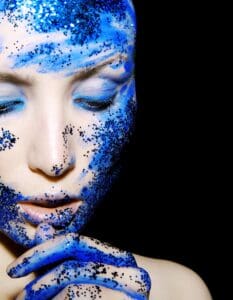Painting Lessons particularly with the use of acrylic paint is a favorite among new artists because of its flexibility. But what is acrylic? Acrylic is a sort of paint made with synthetic resin as the medium (liquid) to bind the pigment, rather than natural oils like linseed used in oil paints. It has the advantage of drying more quickly compared to oil paint and being water soluble.
Among the characteristics of Acrylic paint is its permanence. Unlike oil paints, acrylic paint is not susceptible to yellowing or hardening with age. It is a water-based medium and the typical texture and consistency is comparable to oil paints.
If you have recently chosen to consider your painting hobby slightly further and develop your existing skills or discover the basics of creating your own paintings, you may want to consider taking painting lessons. Similar to new skills, it’s rather a little daunting in the beginning knowing where and how to start, especially without having someone to help guide you through the steps.
Here are a handful of few guidelines to help you start painting with acrylics.
1. Be cautious to not pour out more paint on your palette than you will need. Acrylic paints do dry rather quickly and you will waste paint unless you use it up quickly. If you’re using a normal plastic palette invest in a spray bottle so you can spray a fine mist over the paint regularly to help keep it damp.
2. Maintain a sheet of paper towel or fabric next to the water container and get into the habit of clearing off your brushes on it after you bring them up. This stops water drops running down the protective cap on shaft and onto your painting, producing smears.
3. If applied heavily, either straight from the tube or with very little water added, or if mixed with a little white, all acrylic color can be opaque. If diluted, they could be utilized like watercolors or for airbrushing.
4. When an acrylic wash dries, it’s permanent and, in contrast to a watercolor wash, is insoluble and may end up being over-painted without concern with disturbing the prevailing wash. The colors of future washes blend optically with the previous ones.
5. If you want clear glazes, these ought to be developed in thin layers; a heavy layer will make a glossy surface.
6. To increase the flow of a color with nominal loss of shade strength, use flow-improver medium rather than just water.
7. Because acrylics dry rapidly, you have to work fast if you wish to mix shades. If you’re working on paper, dampening the paper will increase your working period.
8. Masking tape could be placed onto and removed from dried acrylic paint without damaging an active layer. This makes it simple to create a sturdy or sharp edge. Make certain the sides of the tape are trapped down securely and do not paint too heavily on the edges, otherwise you won’t obtain a clean line when you elevate it.
9. Masking liquid can be used with acrylics washes, in addition to watercolors. Once masking liquid has dried out in a brush, it’s almost not possible to remove. Sinking a brush into some washing-up fluid first makes it much simpler to clean masking liquid out of a brush.
10. Provided it’s used pretty heavily and the item to be trapped isn’t too heavy, acrylic paint will act as glue in a collage.
Acrylic Painting Lessons can teach you to create an interesting acrylic painting, try combining various techniques into the same painting. This can be done easily with the acrylic painting medium because it is so versatile. It may be thinned right down to resemble watercolor or it can be applied thickly.
Source by Jodi Cressy
Disclaimer: The views and opinions expressed in this article are those of the authors and do not necessarily reflect the official policy or position of Irish Artmart.




